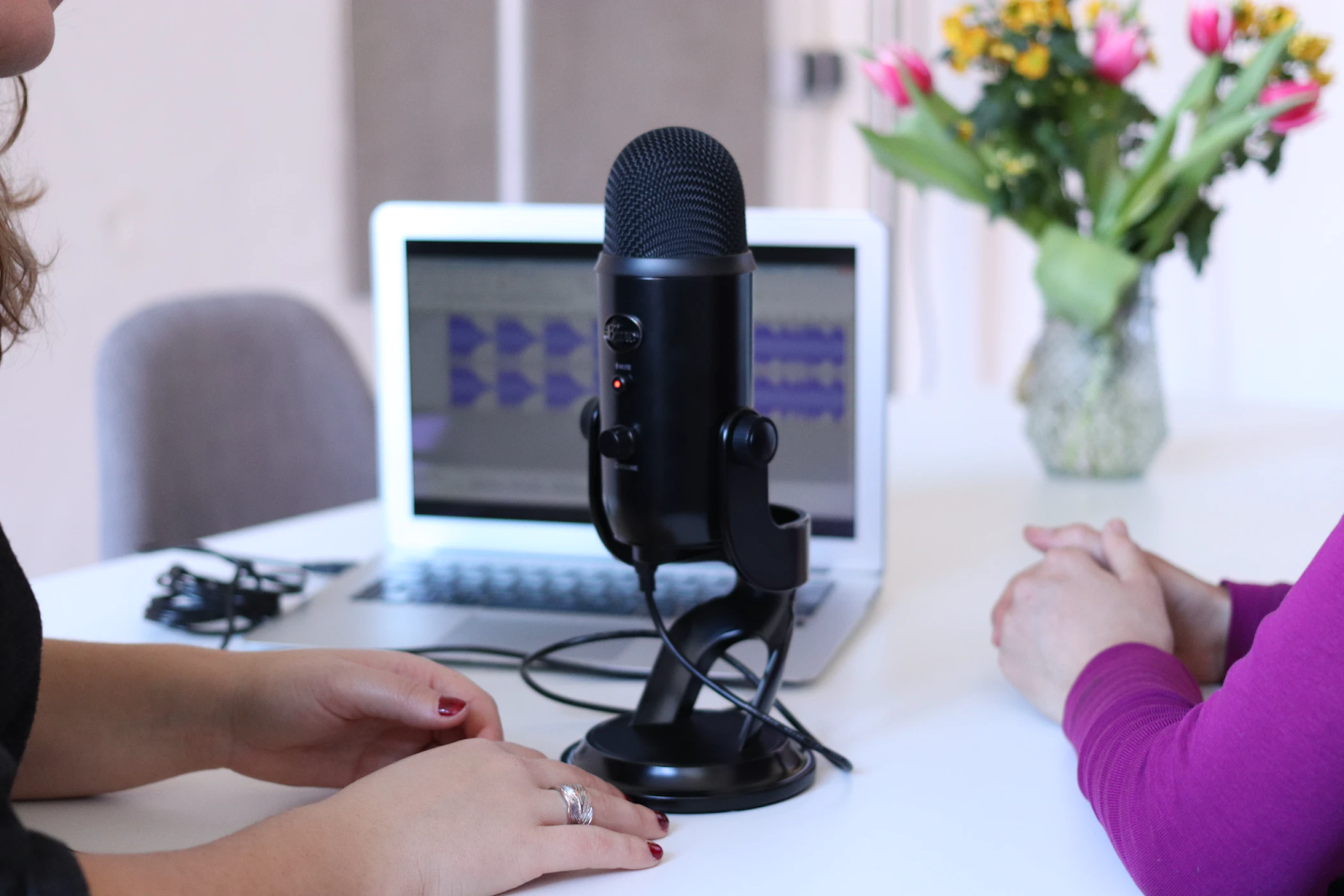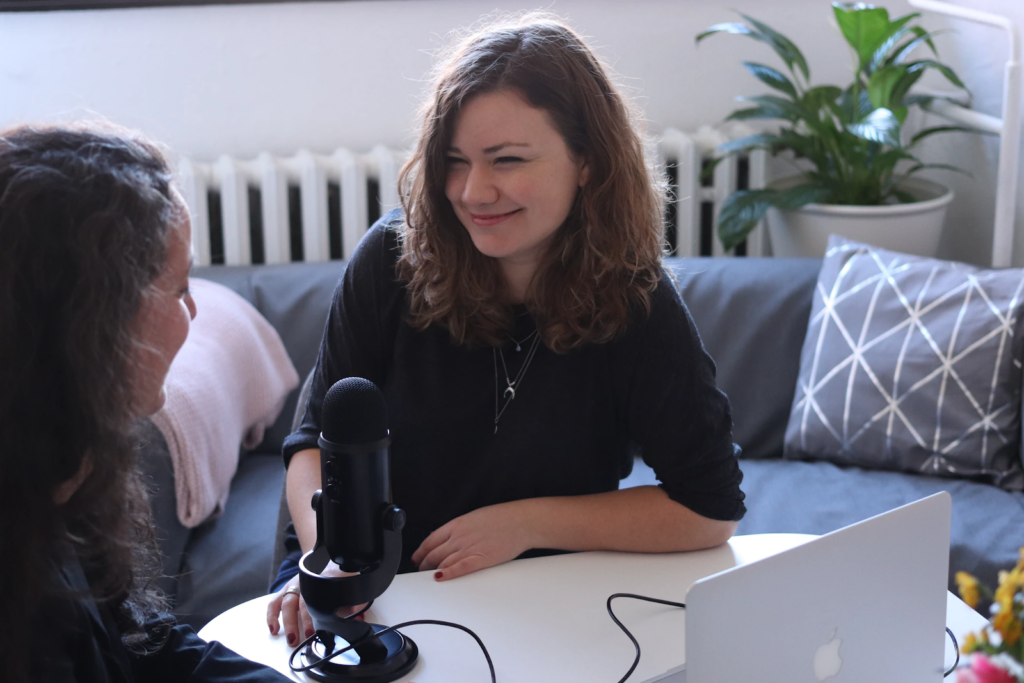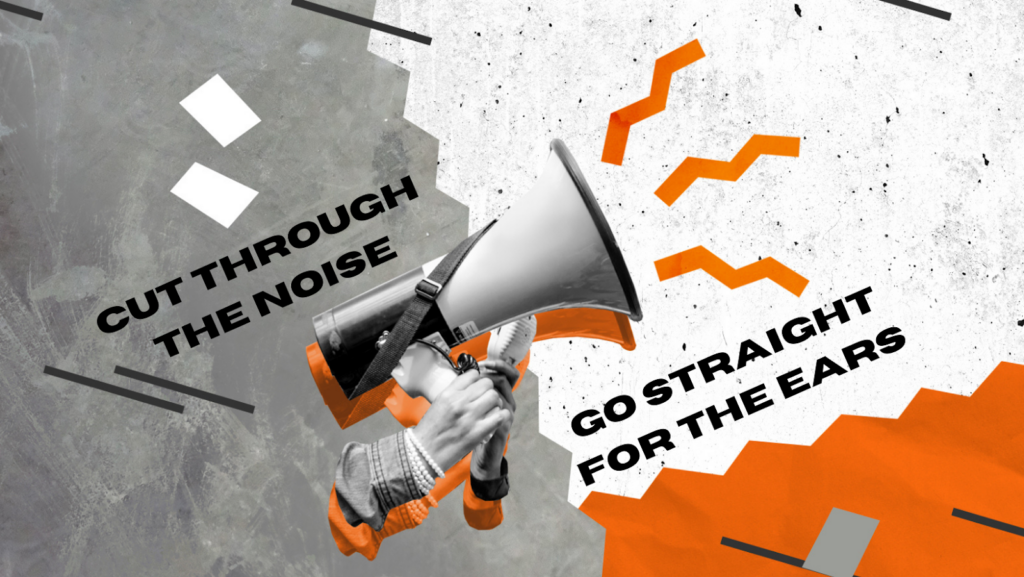What sets successful businesses apart from those struggling to stay afloat?
As an entrepreneur, I see my fair share of questions asking: Is Email Marketing Dead? Is the PDF dead? …. Are Webinars Dead too?! (Spoiler alert: all are alive and well).
Most successful businesses use the same tools, tactics and terms to grow: SEO, hashtag analysis, funnels, and so forth. They follow the same trends and hop on the same platforms.
But I often wonder, what’s left? How do we continue generating leads, driving conversions and continuing to innovate?
Consumer preferences evolve rapidly, as do technologies and trends. This is true today more than ever. Faced with a global pandemic, every business has had to adapt, more than once — and unsurprisingly, the vast majority have followed in each other’s footsteps.
Events have gone virtual, and webinars are exploding in popularity. While this is great news for businesses and their audiences alike, especially as it opens up opportunities in markets far and wide, there’s a better way for businesses to accomplish their goals… and it might be something you’ve overlooked until now.
After all, the vast majority of marketing and sales leaders believe that webinars are one of the the best ways to generate quality leads.
But what if you could see better results with less time, less money and less planning? .
You can… with a podcast!
You don’t need to be a big, Joe-Rogan-type personality, or a big brand like the New York Times with The Daily… Every company should have a podcast, and if it’s not clear to you why, we’re going to walk you through the plethora of perks, step-by-step…
So let’s begin…
Perks of Producing a Podcast?
We’ll compare webinars to podcasts so you can see for yourself which option is best for you.

Time is Money…
Consumers want content: quickly, conveniently and consistently. Evergreen content is great. But in tech, things change every day. You need to go on a journey with your buyers and evolve with them.
In this on-demand economy, the faster you work, the more valuable you are to your consumers. And new data from the National Technology Readiness Survey* (NTRS) shows this isn’t just the case for the young or the wealthy. Everyone wants things on-demand…
It takes a TON of time to prepare a webinar or masterclass, from picking a topic, preparing assets like powerpoint slides or homework, creating visual assets and branding for marketing and so on. Most places budget EIGHT weeks for a webinar from ”concept to event“.
But with a podcast, all you need is a guest — who brings the content with them simply by bringing themselves and their expertise — and the conversation will flow naturally. The preparation is minimal. (If you want to know more about the process of building your podcast, click here). All it takes is recording one conversation and the rest can be done in a few hours.
A Bigger, Faster Following
Everyone knows the secret to growing a social media following is posting more quality content consistently. If you put out a podcast weekly instead of a webinar monthly (while expanding the same cost and effort), you build a following that much faster.
More importantly, each time you launch a new webinar, you have to start promoting it from scratch. You have to make sure you bring in a new audience or that you come up with a new topic so that it is interesting to previous participants. This makes webinars not only more effort to manage but less effective because you’re not building any momentum.
The way people consume webinars and podcasts are also quite different; people choose to follow a podcast weekly and will in turn build longer term relationships as opposed to webinars where attendance is quite sporadic. This makes the process of growing and building an engaged audience, which comes naturally in podcasting, more challenging with a webinar.
Additionally, you’re not starting your marketing from scratch each time you produce a new podcast episode. And if you don’t market your podcast and people don’t tune in when it premieres, it’s fine since you can go back to marketing it at any time. It won’t feel like homework, and you can reach your audience at every step of the way.
With a podcast, if you stay consistent with recording and uploading episodes, your audience will find you. There’s tons of examples of podcast successes building huge audiences, quickly, with no (or little) promotional efforts.
This is because podcasts don’t require immediate marketing. The distribution channel is built-in.already built into the process. You just post the episode to your chosen podcast management platform (i.e. BuzzSprout) and it goes live on dozens of channels in minutes. You also have a larger reach considering the amount of platforms with a podcast section.

Convenience! (for you and your audience)
Combined with the macro trends of on-demand audio and connected cars, the popularity of podcasts is only growing. Contrary to webinars that do not support on-the-go or commuting audiences, podcasts give listeners the flexibility to listen anytime, anywhere they want.
Always listen to podcasts in the morning while you make your breakfast? On your commute (if you still have one?) Before bed? Whatever your routine is, podcasting is designed to match it.
Plus, when someone finds a good podcast that they enjoy listening to every week, it becomes a part of their ritual. If people like you and like what you have to say, they will join your community. They will start to follow what you’re doing in other aspects of your business and they’re more likely to reach out and connect with you. That means there’s one less obstacle between you and your listeners.
And when you upload consistently, you will train your audience to know when to expect something new from you. They will be excited for your brand new episode to go live. All you have to do is keep recording and uploading episodes. Your audience will be there, waiting to tune in!
And it’s convenient for YOU… because you can get started with no more gear than your computer, a microphone and a broadband internet connection. People could be listening to your first podcast episode in less than a day.

Webinars, on the other hand, provide attendees with a link to register and block your listener’s busy calendar. They lock you down to one hour or more at your computer to pay attention and learn (no wonder on average only about 46% of registrants actually attend).
The marketing that goes into a webinar is also more tricky. To ensure a webinar is successful, you have to drive traffic to the opt-in page and consistently follow-up with the prospect to have them join. And if you manage to do all of that, people still have to jump through hoops just to join a single webinar.
At the same time, if you don’t market your webinar, it’s a huge sunk cost since you’ve lost the opportunity to interact with your audience face-to-face. You also lose a huge portion of your potential engagement. Sure people record them and upload them to platforms like YouTube, but how often are people actually viewing these replays? (Are you even tracking the replays? Especially when there’s fresh content being churned out elsewhere every millisecond).
Reduce your Margin of Error
Nothing increases the amount of pressure upon people that are expected to give presentations than putting them on the spot. Webinars are recorded in real-time so the pressure is all on you and your presenters. This increases the pressure, forcing the presenters to spend even more time practicing. Or worse yet, they prepare a script or read off of a slide deck (snore…boring); this will put your audience to sleep.
(Don’t get us wrong, there are some great webinars out there. That’s not what this article is about. What we’re saying is a podcast is easier and faster to set up and manage for all involved AND it will likely drive greater results toward the successful milestones you are looking to achieve.)
Podcasting puts guests at ease because they’re pre-recorded and guests know you can edit anything out that they don’t like. In today’s day and age where entire families are at home and interruptions are plentiful, this is a lifesaver. This doesn’t just help to put guests at ease, but it actually enables you to create greater quality content because when the guest is more relaxed they tell better stories.
A Thought on Genuineness
As you know, there’s a lot of copy and content creation that goes into building your brand. More often than not, you’re hiring someone to write your copy, or at least to clean it up for you. And so, inevitably, webinars tend to be more salesy. While they can offer lots of value, there’s no denying that they come across as a sales pitch.
Podcasts don’t have the same effect. Podcasts are not a form of direct selling but rather engaging and connecting with the audience based on a common theme or interest. Even if you are selling something — and let’s face it, most people are — you’re also providing value and leveraging the casual and conversational tone of the podcast medium to build an authentic connection with your audience. So a podcast is your only opportunity to produce original, authentic material…every single time, which is why they allow you to connect with your audience on a personal level.
Consumers today not only crave, but demand brand authenticity. And that’s going to help your bottom line…Because that’s what sells! Relationships.
Maybe that’s why podcasts are also more inspiring. Sometimes you come out of listening to a podcast with all kinds of new ideas from everything you learned. Webinars on the other hand may only present one angle of a single topic. With no back and forth between host and guest, you miss an opportunity to get those burning questions of yours answered.

Brand Positioning: the Power of Trust & Relationships
In many ways, #b2bmarketing is about being the best resource you can be. But how do you become a resource? How do you show up consistently for customers – no matter what stage of a buying cycle they’re in?
We all know it. You have to help first. You can’t sell to a B2B buyer without them knowing, liking and trusting your brand. If your buyers listen in to each episode, you’ve earned their trust. And they’re much more likely to buy from you.
Podcasts have a way of feeling more one-on-one, as if you’re being talked to instead of talked at. The ability to listen to someone else’s story and gather lessons from their experience is completely different in a podcast than in a webinar (that is often presented as a lecture). And when you’re being authentic, you build TRUST with your audience.
Even if the listener doesn’t agree with the thoughts of the host or the guest, trust is still gained in this form of honest storytelling. You can immediately build a relationship with someone if they trust you are being honest.
As HubSpot’s co-founder, Dharmesh Shah, put it in an article (while discussing content marketing strategy with Inc. Magazine’s Jeff Haden):
“Although it is still possible to blast the world with your message and offering and try to interrupt your way into people’s lives with your marketing, that’s the most expensive way to do it. The cheaper and better way is to tell a story or share something helpful and useful — that’s the power of content marketing.”
That’s why the podcast medium is truly unique. Each episode offers a blank canvas to connect with your listeners. They allow you to deliver value while simultaneously positioning yourself as an authority in a particular topic or field, which will help you influence clients and customers in ways that encourage them to purchase your products and services, invest in your business, or promote you to their peers.
Besides, isn’t it time for you as a professional to be the trusted resource of your tribe?
The Value of Versatility
Not only does your podcast have a built in distribution channel, but you can use your podcast to level up your marketing efforts elsewhere!
A podcast starts with audio…but then it can be repurposed into 5, 10 or even 20 different pieces of content. Whatever format your buyers are looking for…video, audio, written, social: you can create all of these formats from a single podcast episode. And the podcast itself is so easily integrated with other forms of marketing.
Bear in mind, a podcast doesn’t (or shouldn’t) have to replace your webinars. Both podcasts and webinars share a common ground in that listeners might learn something but they each serve a different purpose.
As Bev Attfield, Principal of Workplace Science at Jostle & Host of the People at Work Podcast, told our team in a private conversation:
“Our podcast is more intimate and frequent (airing 2x week at the moment); we use it to explore a variety of workplace topics relating to how people experience their workplace. It’s a key way for us to add to the knowledge community for leaders and raise our profile, in a very conversational, friendly way.
Webinars are used for a specific learning experience, and while we don’t do them as often (maybe 6 per year), they do add to our mix of resources and knowledge that we offer up in a thought leadership capacity. We’ve also used this modality successfully for customer training and introduction of new product features.
I think the choice of one over the other depends on what your intended outcome is. I don’t see them as interchangeable; for us they serve different purposes and we approach them quite differently because of that.
While both can generate exposure for your brand, they require different levels of attention, time, and commitment to creating an audience, adding value, and earning brand loyalty.”

So you think you want a podcast?
You might think podcasts are a saturated / competitive space but about 104 million Americans listen to podcasts monthly — with the average listener streaming at least five hours of podcast content a week.
And it’s only going to grow from here. The podcasting business is projected to grow to more than $3.3B by 2025! And the pandemic has only amplified this. Recent research shows that global podcast listens have increased by 42% and European listens are up by 53%.
In addition, Apple’s decision to share analytics with creators was a massive step forward for the B2B marketing community. This gives B2B marketers a new and measurable way to reach audiences in a format that’s educational, influential and captures their attention.
In addition, podcasting has seen unprecedented investment (follow the money, right?)
Award-Winning podcasting company, Gimlet Media raised $6 million in Series A funding, and WNYC announced plans to open a new podcast division, with $2 million in funding committed.
More recently, this winter, a new network, Wondery, founded by Fox ’s former international CEO, announced its launch with over $1 million in funding. All of this translates to greater investment in content. Funds in hand, networks are backing bigger and bolder projects than ever before.
So how do you build a successful podcast?
Here are just a few tips to get you started…
(1) You don’t need a professional studio with fancy equipment to record a podcast. All that’s required is a laptop or tablet, audio recording and editing software… but do “not skimp on a good microphone.”
(2) Launch with more than one episode! Word of mouth matters. Momentum matters. So don’t launch with just one episode. Have four or five in the can and launch those too. That way listeners can really dig into your content. Record and create a few episodes before you launch – and then keep to a weekly (or biweekly schedule). This way, “you don’t feel unreasonably pressured, but you are still able to stick to a regular schedule for your subscribers,” as suggested by Jen Spencer, vice president of sales at SmartBug Media and host of a weekly podcast, SmartBug on Tap.
(3) Announce the launch in advance to your business network via email and social media. You want to build an audience before you launch. And in turn, you can use your podcast to inform your marketing. “We’ve been able to track which episodes are the most popular and have used those insights to inform marketing campaigns,” said Spencer. “For example, one of my latest podcast episodes on SEO basics is pacing well ahead of any other episode. This data helps validate the need for our company to create more educational content on this topic, because clearly our audience is hungry for it.”
Or just contact us at PodcastChef and we’ll take care of it, A to Z, for you!
